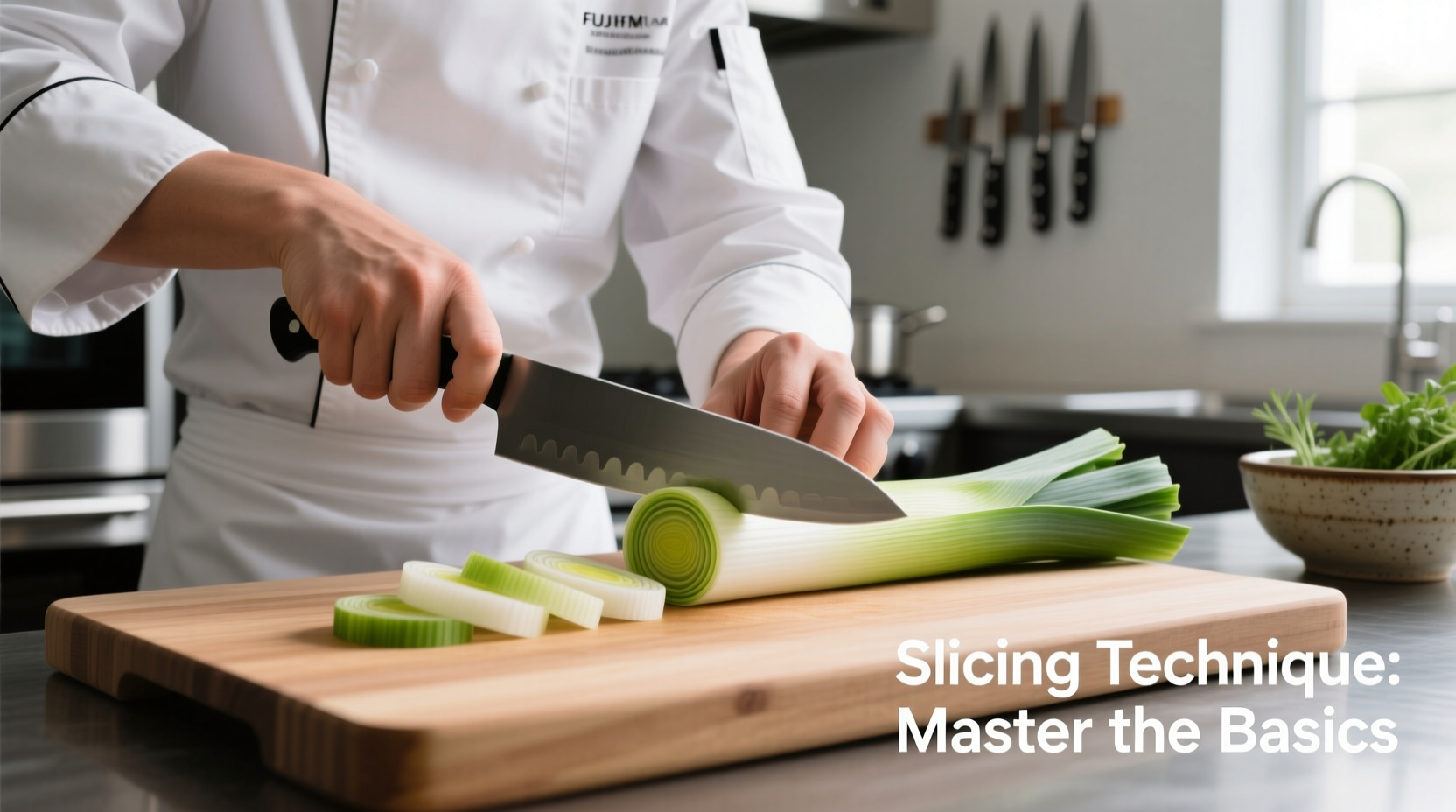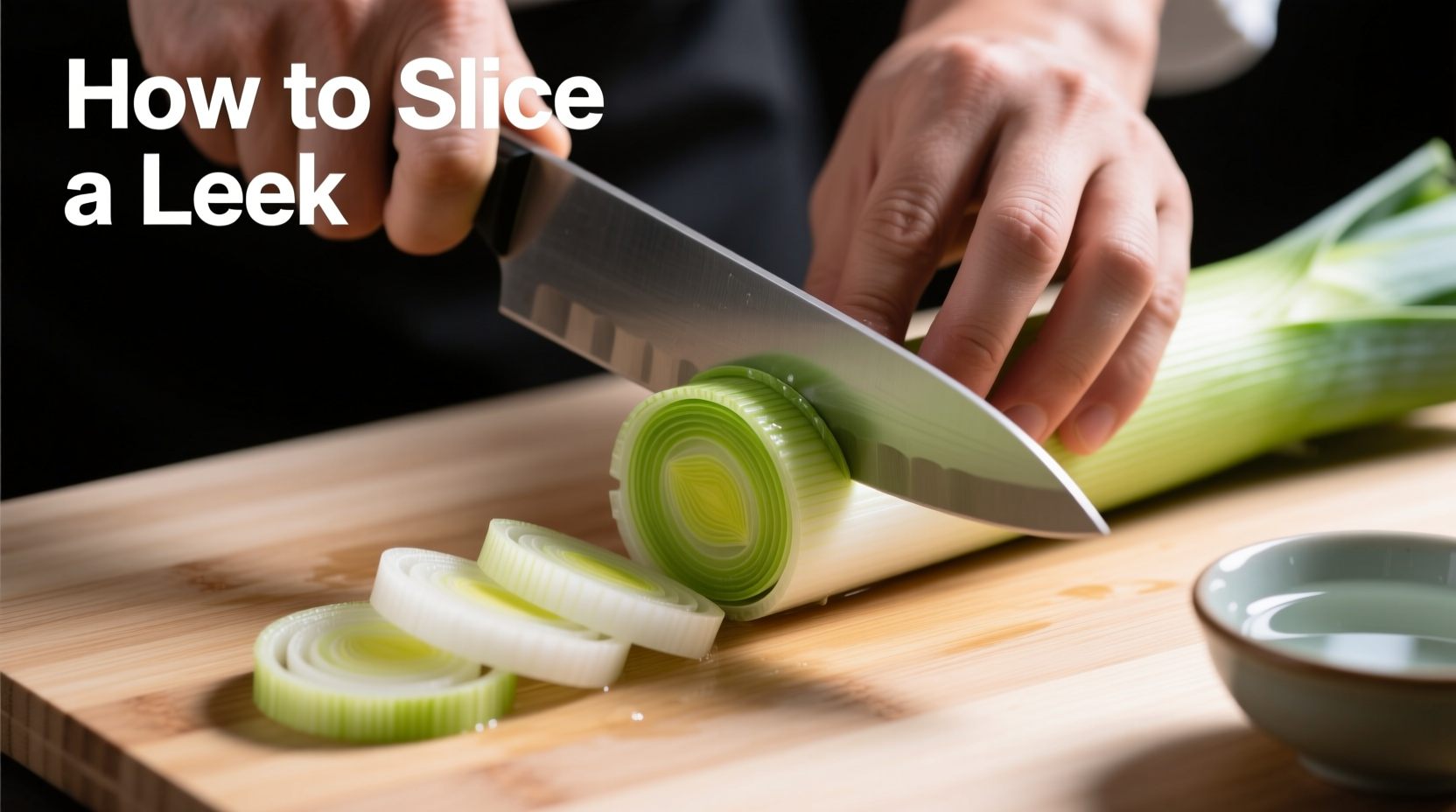Why Proper Leek Slicing Matters for Your Cooking
Leeks contain hidden dirt between their layers that can ruin a dish if not properly cleaned. Unlike regular onions, their elongated structure requires specific preparation techniques to maximize flavor while eliminating grit. Professional chefs know that improper leek slicing leads to inconsistent cooking, wasted ingredients, and that unpleasant sandy texture in finished dishes.
Essential Tools for Perfect Leek Slicing
You don't need specialized equipment, but having the right basics makes all the difference:
- A sharp 8-inch chef's knife (dull knives crush rather than cut)
- A stable cutting board (wood or composite works best)
- A large bowl for washing
- A colander for final rinse
Step-by-Step Guide to Slicing Leeks Like a Pro
Step 1: Prepare Your Leeks
Trim approximately 1 inch from the root end and remove the tough dark green leaves (save these for stock). What remains is the tender white and light green portion perfect for slicing. According to the USDA Food Safety and Inspection Service, proper vegetable preparation begins with clean hands and sanitized surfaces to prevent cross-contamination.
Step 2: The Critical Cleaning Process
This is where most home cooks go wrong. Cut the leek lengthwise from top to root, then separate the layers. Submerge in a large bowl of cold water and swish vigorously to release trapped dirt. Change water 2-3 times until no sediment remains. This method, recommended by the Culinary Institute of America, ensures complete dirt removal without waterlogging the leek.

Step 3: Slicing Techniques for Different Applications
Your recipe determines the ideal slice thickness. Here's when to use each method:
| Slice Type | Thickness | Best For | Cooking Time |
|---|---|---|---|
| Thin Rounds | 1/8 inch | Soups, sauces, delicate dishes | 3-5 minutes |
| Medium Half-Moons | 1/4 inch | Stir-fries, sautés, quiches | 5-7 minutes |
| Thick Slices | 1/2 inch | Grilling, roasting, gratins | 10-15 minutes |
Step 4: The Actual Slicing Process
Place cleaned leek halves flat-side down on your cutting board. For thin rounds, make perpendicular cuts at your desired thickness. For half-moons, stack several slices and cut lengthwise. Professional chefs at The French Laundry recommend keeping your non-knife hand in a "claw grip" to protect fingertips while maintaining control.
When Different Slicing Methods Work Best
Understanding context boundaries prevents cooking disasters. Thin slices work beautifully in delicate bisques but disappear in hearty stews. Thick slices maintain structure in gratins but won't melt properly into sauces. The Journal of Culinary Science & Technology confirms that slice thickness directly impacts flavor release rate and texture in finished dishes.
Storage Tips for Sliced Leeks
Sliced leeks keep for 3-4 days in an airtight container with a slightly damp paper towel. For longer storage, blanch slices for 90 seconds and freeze in portion-sized bags. Never store sliced leeks in water - this causes rapid nutrient loss and texture degradation as documented by the National Center for Home Food Preservation.
Troubleshooting Common Leek Problems
Problem: Leeks still gritty after washing
Solution: Cut smaller sections and agitate more vigorously in multiple water changes
Problem: Leeks turning brown after slicing
Solution: Store in cold water with lemon juice (1 tablespoon per quart) to prevent oxidation
Problem: Inconsistent slice sizes
Solution: Stack multiple slices before cutting for uniform half-moons











 浙公网安备
33010002000092号
浙公网安备
33010002000092号 浙B2-20120091-4
浙B2-20120091-4